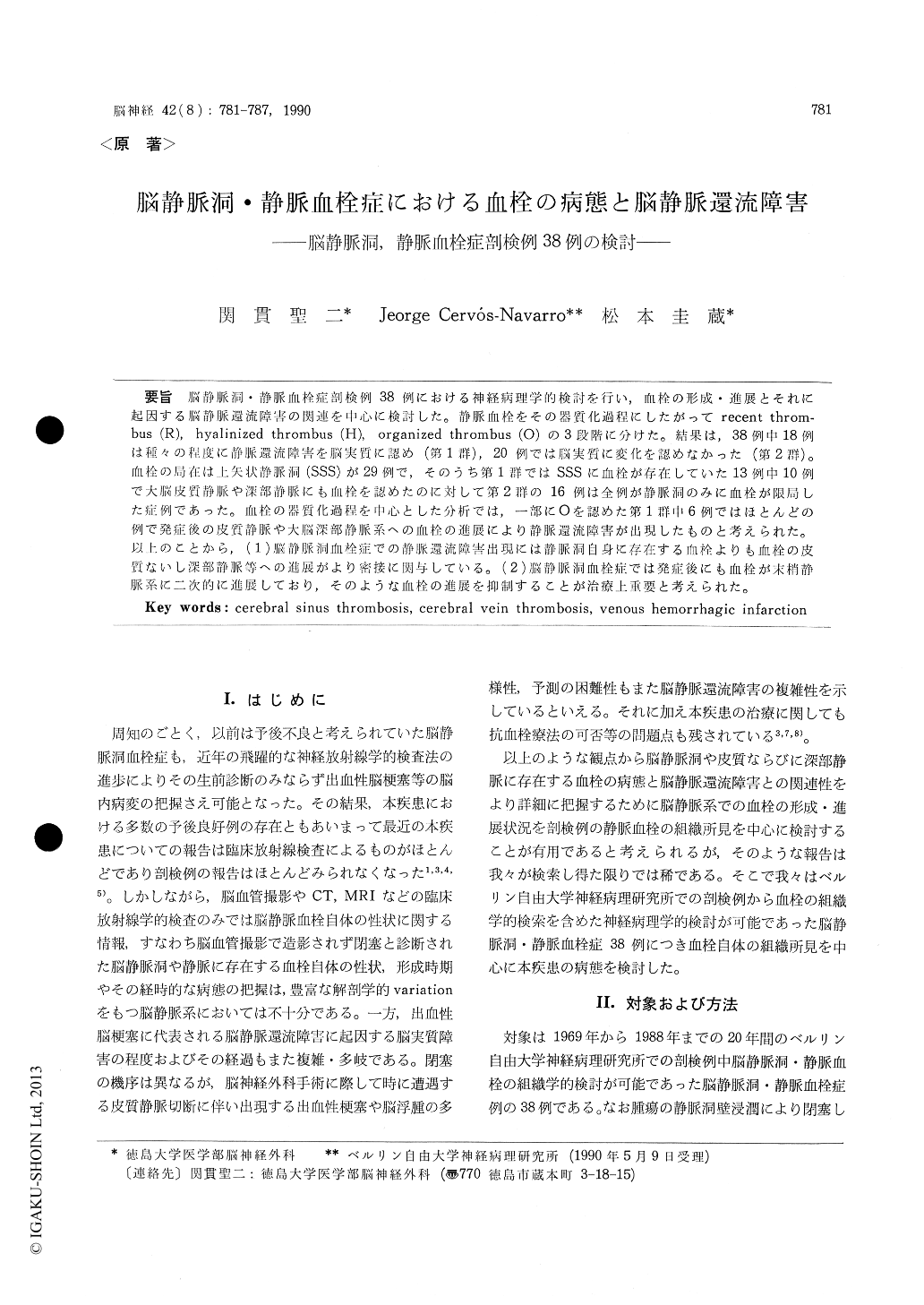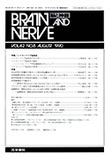Japanese
English
- 有料閲覧
- Abstract 文献概要
- 1ページ目 Look Inside
脳静脈洞・静脈血栓症剖検例38例における神経病理学的検討を行い,血栓の形成.進展とそれに起因する脳静脈還流障害の関連を中心に検討した。静脈血栓をその器質化過程にしたがってrecent throm—bus(R),hyalinized thrombus(H),organized thrombus(O)の3段階に分けた。結果は,38例中18例は種々の程度に静脈還流障害を脳実質に認め(第1群),20例では脳実質に変化を認めなかった(第2群)。血栓の局在は上矢状静脈洞(SSS)が29例で,そのうち第1群ではSSSに血栓が存在していた13例中10例で大脳皮質静脈や深部静脈にも血栓を認めたのに対して第2群の16例は全例が静脈洞のみに血栓が限局した症例であった。血栓の器質化過程を中心とした分析では,一部にOを認めた第1群中6例ではほとんどの例で発症後の皮質静脈や大脳深部静脈系への血栓の進展により静脈還流障害が出現したものと考えられた。以上のことから,(1)脳静浄脈洞血栓症での静脈還流障害出現には静脈洞自身に存在する血栓よりも血栓の皮質ないし深部静脈等への進展がより密接に関与している。(2)脳静脈洞血栓症では発症後にも血栓が末梢静脈系に二次的に進展しており,そのような血栓の進展を抑制することが治療上重要と考えられた。
38 autopsied cases of cerebral sinus-vein throm-bosis (CSVT) in our institute were studied. In this study, special attention was paid for the evolution and fate of venous thrombus.
18 cases showed hemorrhagic infarction or in-tracerebral hematoma (group 1 ; G 1). In contrast, no cerebral parenchymal changes were observed in the other 20 cases (group 2; G 2). In 13 of 18 cases of G 1, superior sagittal sinus (SSS) were thrombosed. 10 of these 13 cases showed throm-hosed cerebral cortical veins (CV) or deep cerebral veins (DV). In contrast, none of 16 cases of G 1 with thrombosed SSS showed thrombosed CV or DV. All cases of the solitary thrombosis of CV or DV (each 2 cases) belong to G 1. Venous thrombi were divided into three stages according to its process of organization ; recent thrombus (R), hyalinized thrombus (H), organized thrombus (O). In the venous thrombi of G 1, 6 cases were R, 6 were partly H, 6 were partly 0. In addition to O, R and H were also observed in group O. Distribution of various stage of thrombus in same case suggested that gradual thrombus evolution had occurred before or after the clinical onset in CSVT.
This study suggested : ( 1 ) CV or DV occlusion may play an important role for the advent of cerebral parenchymal changes in CSVT. ( 2 ) Gradual thrombus evolution after the onset is one of possible causes of slow clinical deteoration after the onset. Therefore, prevention of these throm-bus propagation with anti-platelet drugs or fib-rinolotic therapy should be recommended for the treatment of CSVT. On the contrary, hyperos-molar agents and diuretics may produce potential risk of dehydration, and as a result, accelerate secondary thrombus extension.

Copyright © 1990, Igaku-Shoin Ltd. All rights reserved.


